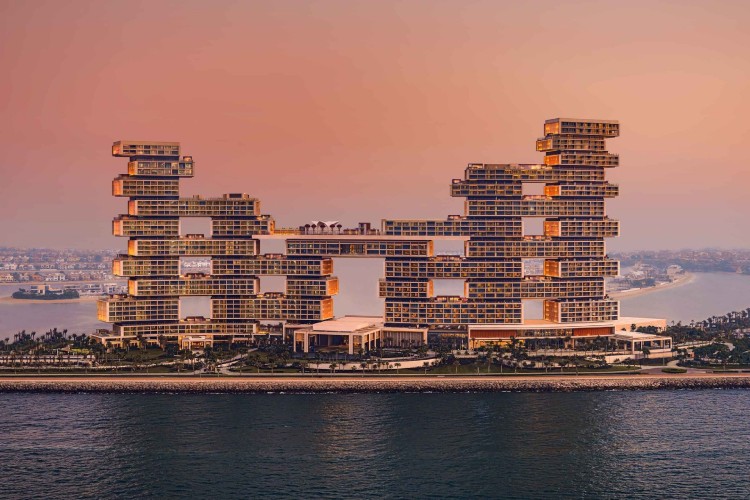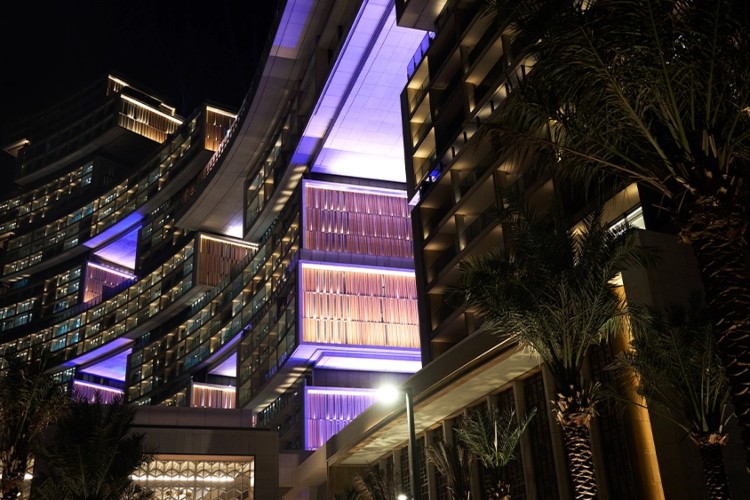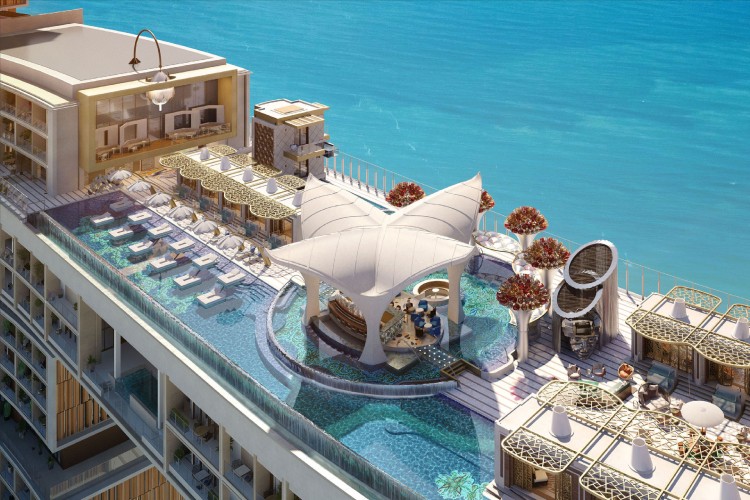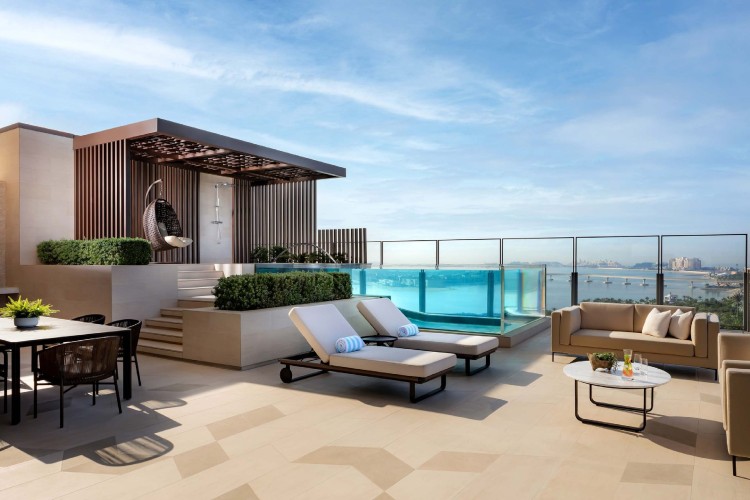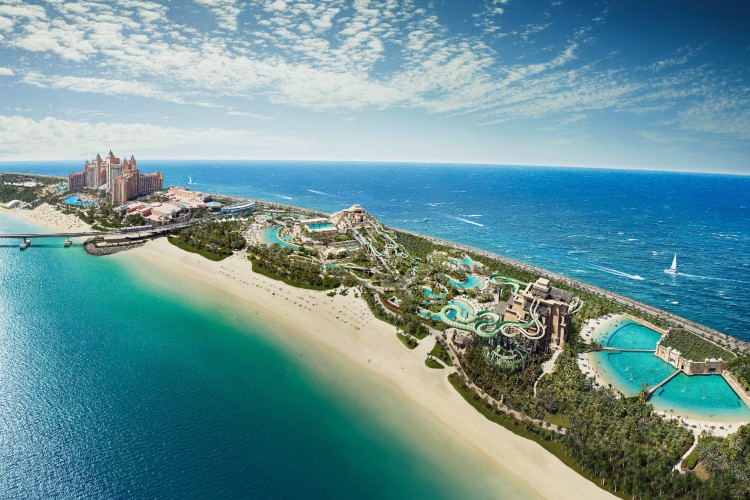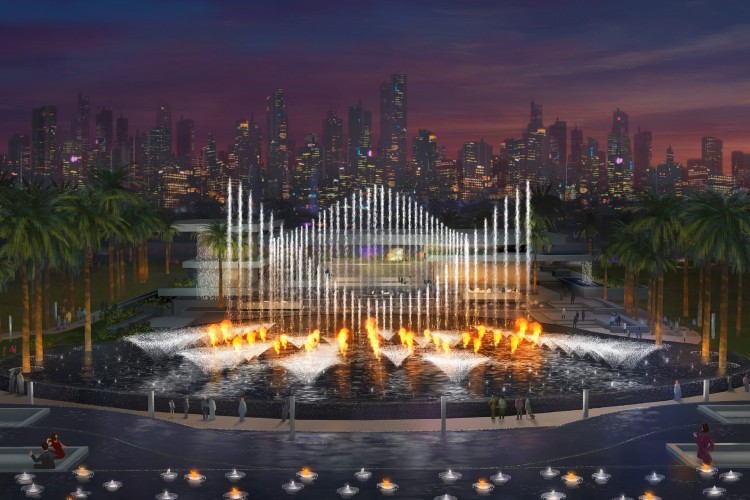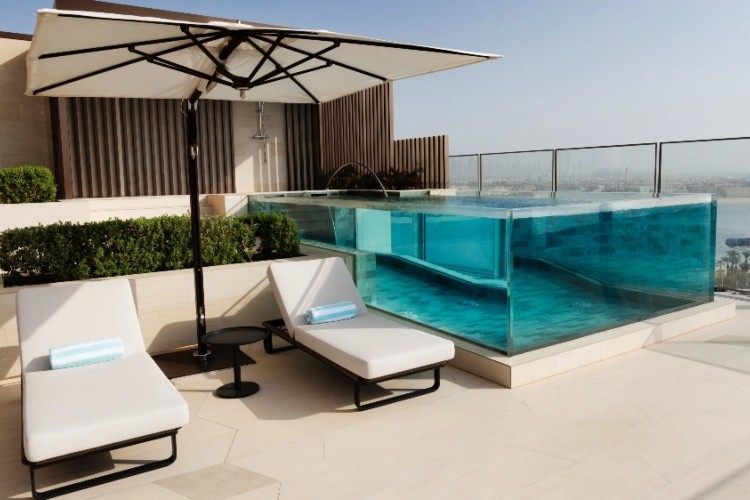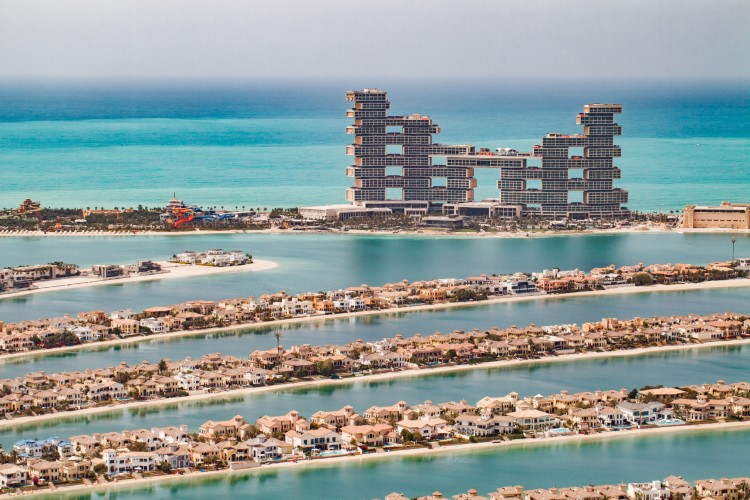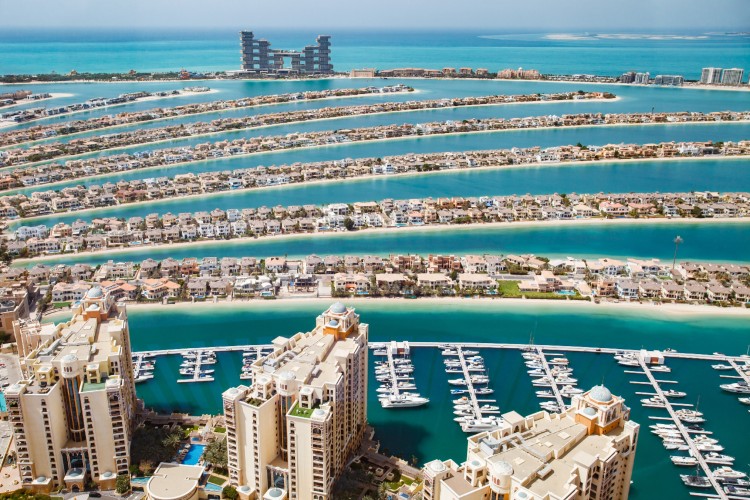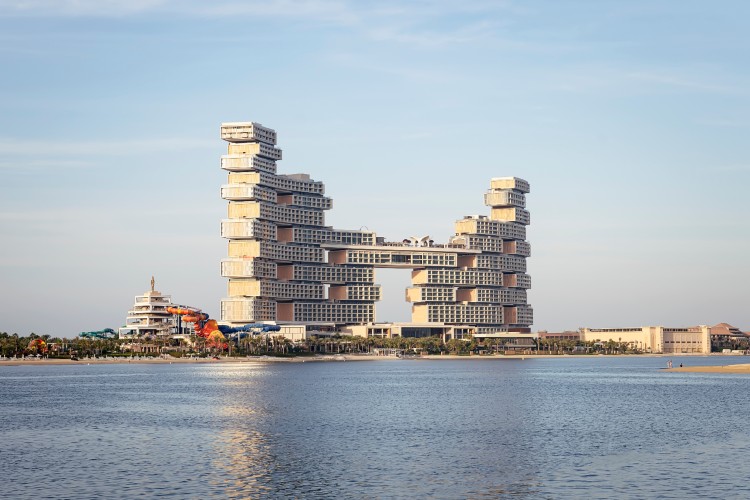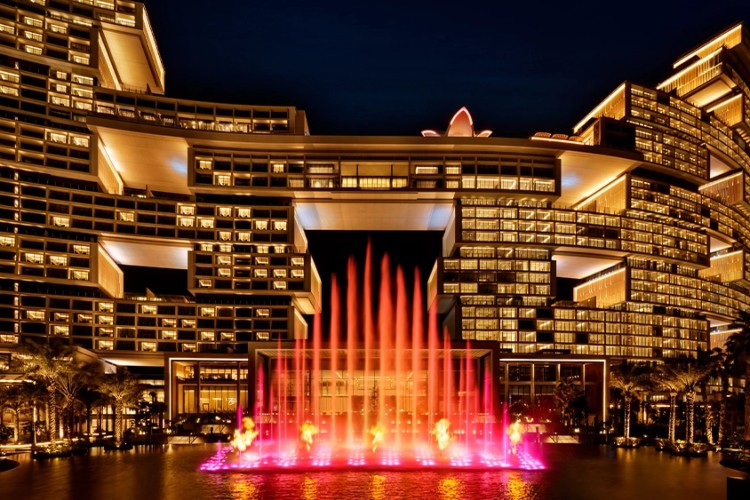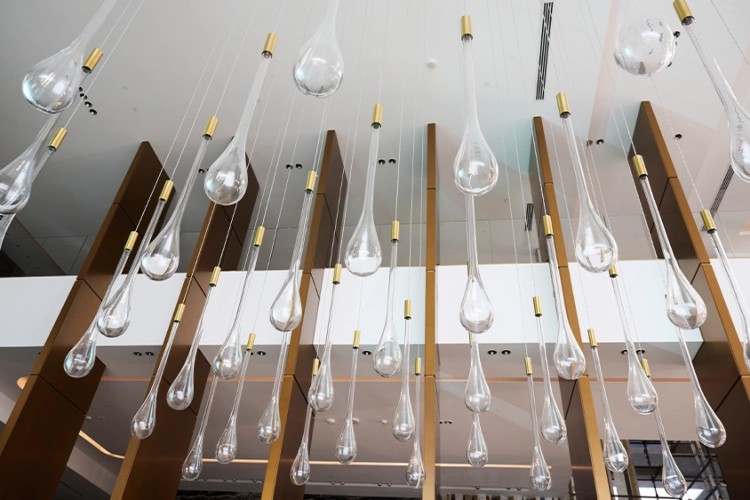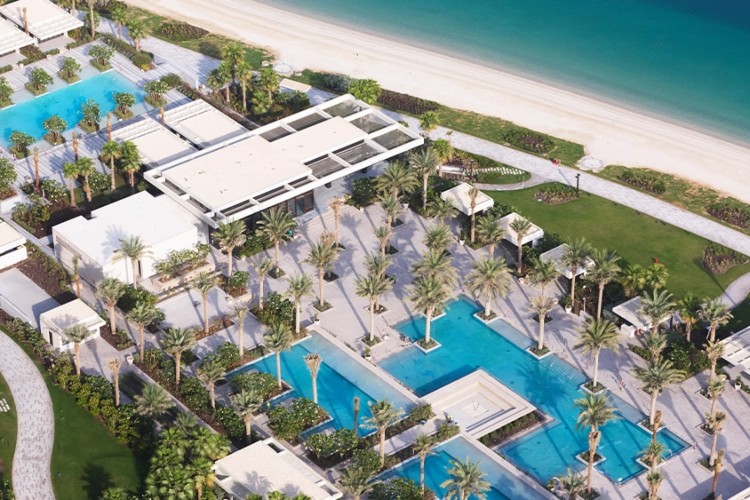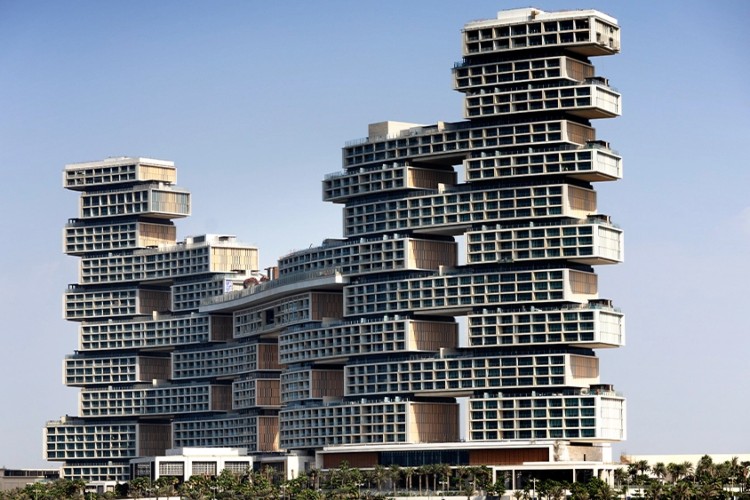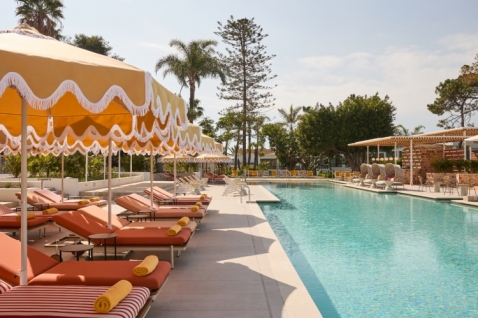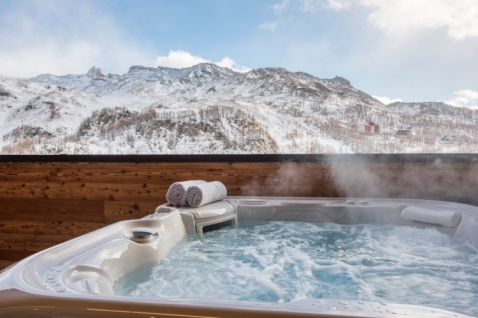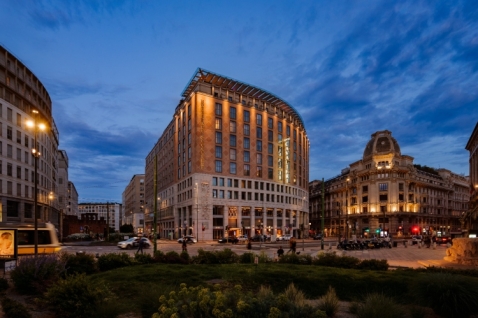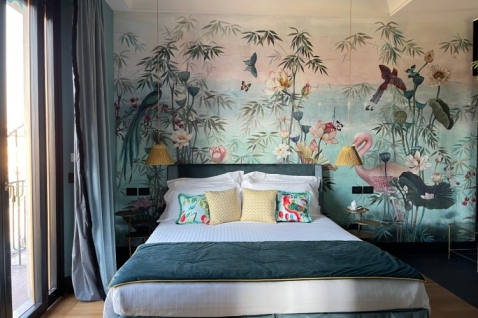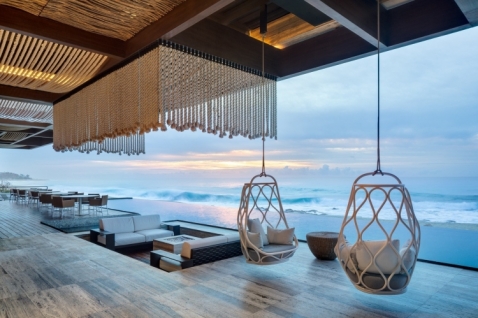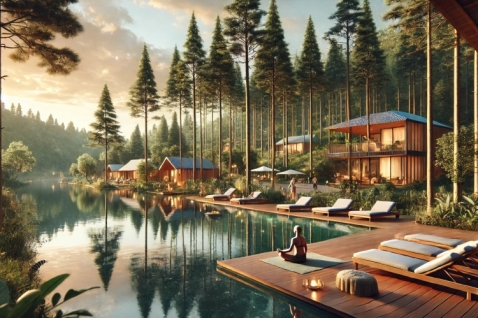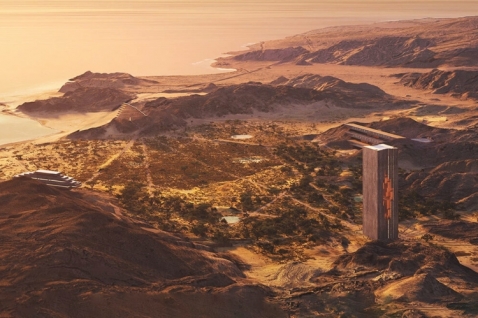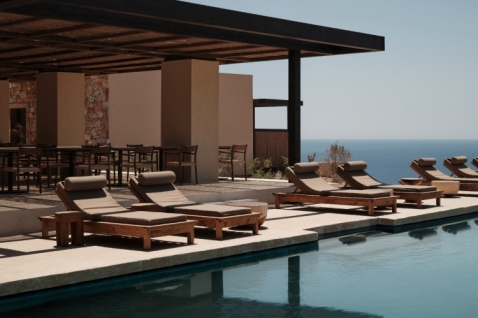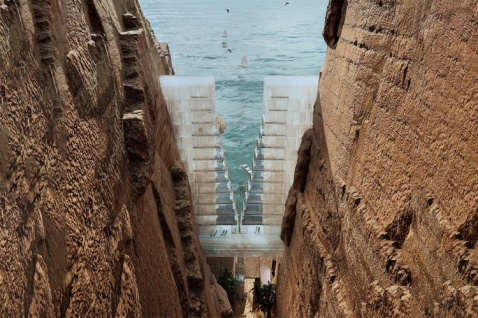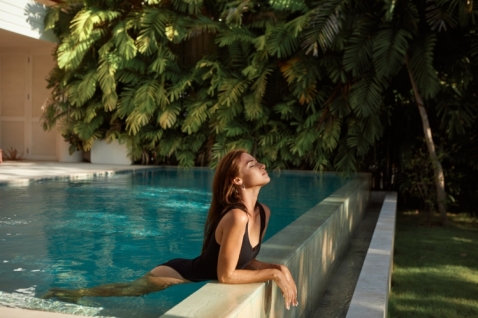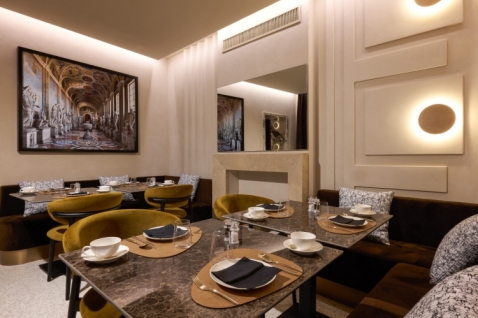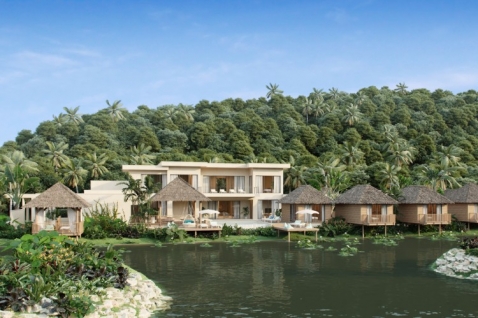More photos
Atlantis the Royal is finally open and filled with many luxurious amenities, including a 28-meter infinity pool…
No city will better showcase the future of the hospitality industry and design than Dubai, where the sail-shaped structure, Burj al-Arab, has set the standard for architecturally relevant vacation spots. This hotel debuted in 1999 with billion-dollar prices, and since then, numerous, equally impressive buildings have opened their doors in Dubai and Abu Dhabi. However, there are only a few that are as visually mesmerizing as the new Atlantis the Royal on Palm Island.
Opened last week, this forty-three-story hotel is located at the end of Palm Island, overlooking the Persian Gulf, not far from the original Atlantis Dubai that opened nearly 15 years ago. Atlantis the Royal Resort & Residences features nearly 800 guest rooms and 231 private homes in a series of angular, geometric boxes that are stacked on top of each other, forming a futuristic-looking structure. Designed by global leaders in the world of architecture, Kohn Pedersen Fox Architects, this hotel has an alluring appearance, representing a sign of design and technological wizardry, set against the sea.
"Atlantis the Royal is all about experiences you can't have anywhere else, and the architecture really helps us achieve our mission," said Tim Kelly, Managing Director of Atlantis Dubai. In total, this hotel consists of six towers connected by a 28-meter infinity pool, thus becoming a new icon of Dubai.
The KPF architectural studio was an almost inevitable choice for Kerzner International, the company behind the new and old Atlantis. In addition to the fact that they signed the New York Hudson Yards project, KPF also designed six of the twelve tallest towers in the world, from the World Financial Centre in Shanghai, to the Lotte World Tower in Seoul. The firm is also a veteran of the luxury hotel industry, responsible for aesthetically innovative properties such as Hong Kong's Mandarin Oriental, Rosewood Hong Kong at Victoria Dockside and Rosewood Bangkok.
According to KPF President and Design Director, James von Klemperer, the new Atlantis was focused on big ideas. "We were asked to dream big while working on this project. To create something truly unique and iconic for Dubai – when I look at it now, I'm blown away by the audacity of this whole endeavour," he said, adding: "With its vertical elevation of outdoor experiences in pools and other environments, the design is truly striking."
Although completely new and original, the design of the new Atlantis is a tribute to the original located not far from the new site. Atlantis the Royal takes a very modern approach to classic sculptural towers – stacked individual blocks filled with their own distinctive amenities. Six unique towers are connected by a central bridge that is almost 1200 meters long. Within each block are openings that add depth and intrigue to the hotel's overall design aesthetic, while also helping to illuminate this space from within. The result: an instant feature of the Dubai panorama, which is both completely simple and unforgettable.
"The building doesn't really have a front or back, which is unusual, and this multi-directional aspect is a special aspect of the design in itself," said Von Klemperer. "In this way, the structures somewhat play the role of a screen, allowing views to wander on both sides, while at the same time the screens are references from mosques and Islamic architecture," he added.
With a price tag of $1.6 billion, the materials used to construct Atlantis the Royal are as impressive as the completed project. This hotel, which is 457 meters long and 167 meters high, required 100,000 square meters of glass, about 160,000 square meters of marble and 220,000 cubic meters of concrete for its construction.
Most of these materials were used for the Sky Bridge, a part of the hotel that serves as the visual, but we can also say the literal, anchor of this entire property. With a length of 1,200 meters, the bridge required serious engineering acrobatics to get it into place. During construction, it was lifted to its place, moving about 6 meters up per hour, with the help of as many as eight hydraulic cranes. Now fully functional, this bridge is home to numerous restaurants, lodges, swimming pools and event spaces.
Like the rest of the hotel, as Von Klemperer says, the bridge "represents a very fun place to see, which is a really serious undertaking in the world of construction and architecture." We are sure that we will talk about it soon, because it will very likely become a feature not only of Dubai, but of the entire Persian Gulf.

